 |
 |
|


|
设计名称 |
DGF3.55A外转子离心风机的设计 |
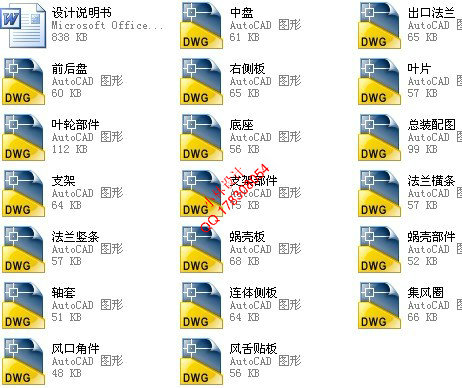 |
|
设计编号 |
W229 | |
|
设计软件 |
AutoCAD, Word | |
|
包含内容 |
见右侧图片 | |
|
说明字数 |
18000字 | |
|
图纸数量 |
见右侧图片 | |
|
推荐指数 |
较高 | |
|
价格: |
价格优惠中 | |
|
整理日期 |
2013.9.26 | |
|
整理人 |
小林 | |
|
购买流程 |
<查看如何购买本站设计> |
|
设计简介 |
文档包括:
word说明书一份,共39页,约18000字
CAD版本图纸,共19张
摘要
当今时代能源紧缺,然而风机又是耗能大户。所以,提高风机的运行效率己成为风机行业不可推卸的责任,也是风机技术发展的必然趋势。由此,本文提出离心式风机个性化设计。
所谓离心式风机个性化设计就是针对一个特定用户提出的气动性能参数及使用条件,设计者应设计出一种专用的离心式风机,除了满足用户的使用条件外,还应保证用户需求的性能参数(即正常运行工况)处于风机气动性能曲线的最高效率点,至少应处于高效区域内,以达到最佳节能目的[34]。
外转子离心风机属于风量适中、风压偏高类型,同时外转子离心风机体积小、占用空间小、噪声低、运转平稳、经久耐用。主要适用于吊顶空调、立柜式空调以及净化、通风等场合[1]。
关键字:外转子;离心式;离心式风机
Abstract
In modern times, the energy shortage, but the fan is a large energy consumption.Therefore, improving the efficiency of the fan's unshirkable responsibility has become a fan industry, is also a air blower technology development inevitable trend.Hence, the personalized design of centrifugal fan is presented.
So-called personalized centrifugal fan is designed for a particular user's aerodynamic performance parameters and conditions of use, the designer should design a special centrifugal fan, in addition to meet the user's use condition, also should guarantee the performance parameters of user requirements (i.e., normal operating conditions) is in the highest efficiency point of the fan aerodynamic performance curve, at least in high efficient area, in order to achieve the best energy-saving purpose[34].
Outer rotor centrifugal fan belongs to moderate volume, high wind pressure type, and at the same time the outer rotor centrifugal fan is small size, small footprint, low noise, smooth operation, durable. It is mainly suitable for ceiling air conditioning, cabinet air conditioning and cleaning, ventilation, etc[1].
Key word: Outer rotor;Centrifugal;Centrifugal fan.
目录
第一章 绪论•••••••••••••••••••••••••••••••••••••••••••••••••••••••1
1.1 引言•••••••••••••••••••••••••••••••••••••••••••••••••••1
1.2 国内外离心风机的研究现状•••••••••••••••••••••••••••••••2
1.3 离心风机概述及DGF3.55A外转子离心风机的特点••••••••••••5
1.3.1 离心风机的基本概述•••••••••••••••••••••••••••••••5
1.3.2 DGF3.55A外转子离心风机的特点•••••••••••••••••••••6
1.3.3 外转子电机的概念•••••••••••••••••••••••••••••••••6
1.4 本文研究的目的和意义•••••••••••••••••••••••••••••••••••7
第二章 离心风机的基本原理•••••••••••••••••••••••••••••••••••••••••8
2.1 离心风机的基本结构•••••••••••••••••••••••••••••••••••••8
2.1.1 离心风机的基本结构•••••••••••••••••••••••••••••••8
2.1.2 离心风机的工作原理•••••••••••••••••••••••••••••••9
2.2 离心风机的基本理论特性••••••••••••••••••••••••••••••••10
2.2.1 离心风机的特性参数••••••••••••••••••••••••••••••10
2.2.2 离心通风机的基本方程式••••••••••••••••••••••••••12
2.2.3 离心通风机的理论特性曲线••••••••••••••••••••••••12
2.2.4 离心风机的损失和效率••••••••••••••••••••••••••••14
第三章 相似设计理论••••••••••••••••••••••••••••••••••••••••••••••15
3.1 相似理论••••••••••••••••••••••••••••••••••••••••••••••15
3.1.1 概述••••••••••••••••••••••••••••••••••••••••••••15
3.1.2 相似原理••••••••••••••••••••••••••••••••••••••••15
3.2 通风机的无因此特性曲线••••••••••••••••••••••••••••••••16
3.3 通风机的相似设计步骤••••••••••••••••••••••••••••••••••17
3.4 校核理论••••••••••••••••••••••••••••••••••••••••••••••18
第四章 DGF3.55A外转子离心风机的总体设计••••••••••••••••••••••••••19
4.1 相似设计数据分析和计算••••••••••••••••••••••••••••••••19
4.1.1 概述••••••••••••••••••••••••••••••••••••••••••••19
4.1.2 风机尺寸换算和结构设计••••••••••••••••••••••••••20
4.1.3 设计风机空气动力略图••••••••••••••••••••••••••••22
4.1.4 风机各部分材料的选择••••••••••••••••••••••••••••23
4.1.5 外转子电机的选择••••••••••••••••••••••••••••••••25
4.2 校核计算••••••••••••••••••••••••••••••••••••••••••••••25
4.2.1 叶轮的强度计算••••••••••••••••••••••••••••••••••25
4.2.2 铆钉的强度计算••••••••••••••••••••••••••••••••••26
4.2.3 轴承的寿命••••••••••••••••••••••••••••••••••••••26
4.2.4 风机平衡校核••••••••••••••••••••••••••••••••••••27
4.3 离心风机设计时几个重要方案的选择••••••••••••••••••••••27
第五章 性能分析•••••••••••••••••••••••••••••••••••••••••••••••••••28
第六章 DGF3.55A外转子离心风机整体及零件Pro/E图••••••••••••••••••29
致谢•••••••••••••••••••••••••••••••••••••••••••••••••••••••••••••••30
参考文献•••••••••••••••••••••••••••••••••••••••••••••••••••••••••••31
附录•••••••••••••••••••••••••••••••••••••••••••••••••••••••••••••••33
|
|
部分图纸 截图 |
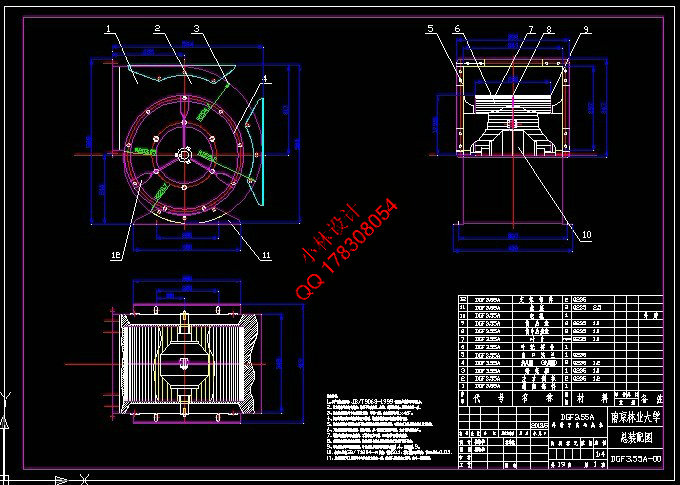 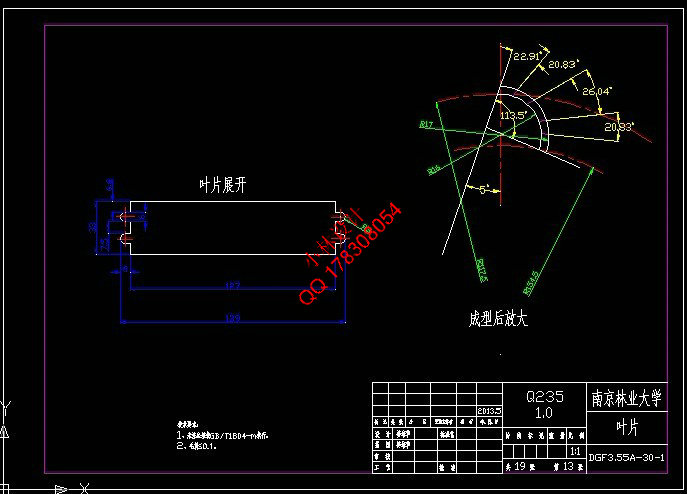 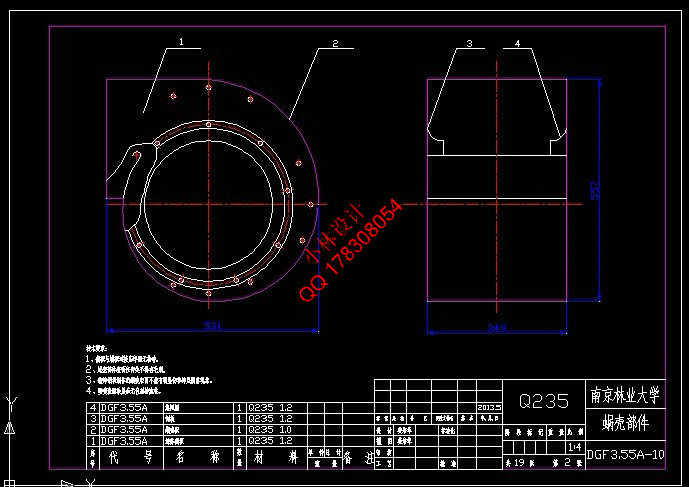 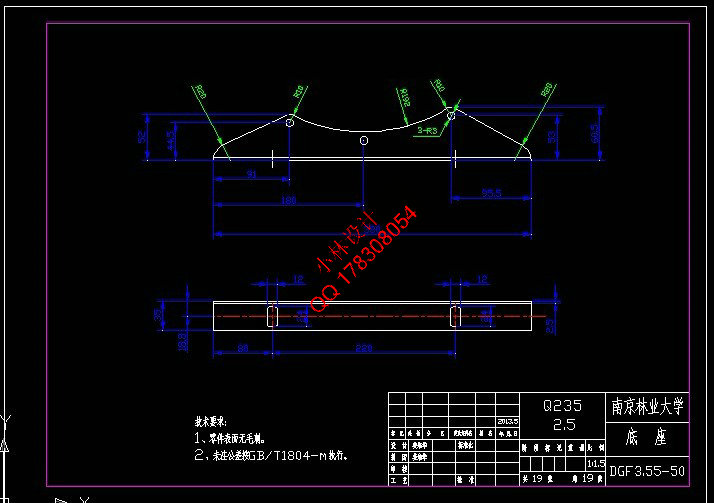 |
|
说明: |
如需了解本设计的具体详细信息请联系本站客服,说明看哪个设计(编号)哪个详细部分,我们将远程或截图给您观看. 机械毕业设计|论文 |

| [要求PR≥2,百度收录≥1000页;联系QQ:178308054] |
声明:根据《互联网传播权保护条例》本站,小林机械资料商城,所列资料均属原创者所有,仅供学习交流之用,请勿转载并做其他非法用途。
Powered by 小林机械资料商城 © 2013-2020 All Rights Reserved. 客服QQ:178308054
喜欢www.xiaolinbysj.com,请告诉你QQ上的5位好友,多谢您的支持! 皖ICP备2021006205号-1
Powered by 小林机械资料商城 © 2013-2020 All Rights Reserved. 客服QQ:178308054
喜欢www.xiaolinbysj.com,请告诉你QQ上的5位好友,多谢您的支持! 皖ICP备2021006205号-1
